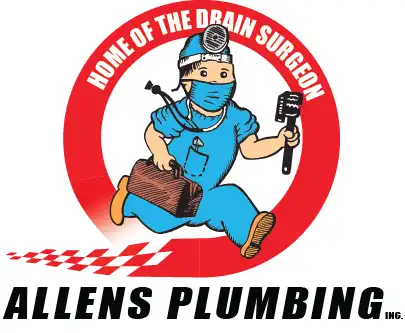Gov. Green focuses on Maui fire recovery in his second State of the State address
Governor Josh Green dedicated a large portion of his second State of the State address to wildfire recovery efforts on Maui and plans surrounding affordable housing. The address started with a moment of silence to honor the memory of those lost on Aug. 8, 2023.
In his address, Gov. Green announced a Housing Hawaiʻi’s ʻOhana plan, vowing to sign into law any legislation that will help move short-term rentals and vacant investment properties owned by non-residents into the local housing market. He also is said he would declare a moratorium on all short-term rentals in West Maui if he is unable to find enough housing for displaced families in the next six weeks.

Moratorium planned if housing goals are not reached
He said that he will be forced to declare a moratorium on all short-term rentals in West Maui if he is unable to find enough housing for displaced families by March 1, 2024.
In an effort to meet that goal, he’s asking short-term rental unit owners to participate by housing displaced Lahaina families, saying “it’s the right thing to do.”
“There are 27,000 short-term rental units on Maui alone, and — if we can dedicate just 10% of these homes to displaced Lahaina families — we can house them all,” said Gov. Green.
Those interested in participating can email mauihousing2024 @fema.dhs.gov.
Earlier this month, Gov. Green joined Maui Mayor Richard Bissen and nonprofit partners in announcing the Maui Interim Housing Plan — a $500 million initiative to create a pool of more than 3,000 housing units for at least 18 months to house those displaced by the fires.
This collaboration between the state of Hawaiʻi, the County of Maui, the Hawaiʻi Community Foundation, CNHA, FEMA, and the Red Cross, set a goal of moving all displaced families from short-term hotels into long-term housing by July 1 — with most households moving in by March 1, according to the governor.
Governor announces House Hawaiʻi’s ʻOhana Plan
Gov. Green also said he will sign into law any bill the legislature sends to him that will help move short-term rentals and vacant investment properties owned by non-residents into the local housing market. He said this will help to increase supply and bring down prices for island families.
“My team has crafted a landmark piece of legislation which will provide tax amnesty to any owner of a short-term rental who chooses to sell it to help us with our housing crisis,” said Gov. Green.
Under this “House Hawaiʻi’s ʻOhana” plan, a sale of this kind — to an ‘owner-occupier’ local family, or to someone who turns the home on into a long-term rental for a local family — will be exempted from capital gains tax, conveyance tax and general excise tax, according to the governor. The plan would start this fall and last 24 months.
“During this tax amnesty period, I’ll personally encourage short-term rental owners from around the world to sell their properties back to Hawaiʻi families,” said Gov. Green.
In addition to $250 million for hotels and rental assistance to individuals, FEMA is currently in the process of leasing 1,500 units to house survivors, and is planning and designing, two housing sites on Maui to house up to 500 additional families — totaling an additional $450 million, according to Gov. Green.
Currently there are thousands of survivors registered for federal assistance, and thousands of others who are still in hotels.
- To date, FEMA has registered over 17,000 survivors for services and will provide them with 18-24 months of rental assistance — well into 2025.
- The American Red Cross is currently still helping to house more than 2,300 families — more than 5,000 individuals — in more than 30 hotels across Maui.
“The road to recovery will be long, and healing will take time, courage, and commitment — but we will get there as we come together as one ʻohana to help and support the Maui community,” said Gov. Green, who was on Maui over the weekend to participate in the Lele Aloha Hoʻulu Lahaina Unity Walk and gathering in West Maui.

According to Gov. Green, $600 million has been set aside in the budget for recovery costs that will continue into 2027.
“I’ve worked with President Biden and his administration directly to ensure that federal funds will pay for 100% of debris removal and emergency protective measures in the disaster areas, for 6 and 12 months respectively — support which will save Hawaiʻi hundreds of millions of dollars as we recover,” he said.
Maui Recovery Fund expected to launch March 1
In November, he joined a coalition together to create the Maui Recovery Fund, which is designed to rapidly provide funds to families who have lost loved ones, or who have suffered
serious injuries in the fires.
“Participation in the fund will be completely voluntary, with the goal of getting as much money as possible to affected families, as quickly as possible. We have already secured $175 million for the fund from our initial partners — including the State, Maui County, Kamehameha Schools, Hawaiian Electric, Charter Communications and Hawaiian TelCom,” said Gov. Green in his address. The fund is expected to be up and running by March 1, with pro-bono services provided by First Hawaiian Bank.
The governor announced that in the coming weeks, the first shipment of modular transitional homes will begin to arrive on Maui as part of our Department of Human Services housing initiative — which is expected to add an additional 480 temporary homes, to help provide a sense of stability as further long-term housing plans are implemented.
As for debris removal, crews began the process of transporting fire debris to a temporary disposal site in Olowalu last week despite heavy testimony against the plan. Mayor Richard Bissen assured the public that the site was only temporary until a final disposal site was identified and built. Councilmembers voted 6-2 with one excused in favor of the site.
“As we move forward, we will continue to remove the debris in West Maui safely and respectfully, and the plan is to listen to the people of Lahaina and rebuild the way they want to rebuild,” said Gov. Green.
Housing and Infrastructure are top priority
Gov. Green called infrastructure and housing the administration’s top statewide priority.
The state’s supplemental budget for fiscal year 2025 alone includes requests totaling $373 million for this area.
The said “there is no silver bullet,” but said greater enforcement of laws regulating the short-term rental market, tighter restrictions and tax changes, emergency measures will help.
Gov. Green said the state faced an urgent shortage of affordable housing even before the Maui fires.
He said the state is such a “desirable destination, and such a profitable investment” for many, that people from around the world have purchased property to hold as investments or rent as short-term rentals to visitors. These investors make on average four times what they would if the property was simply rented to a local family, according to Gov. Green.
According to data shared by the governor, 52% of all short-term rentals in Hawaiʻi are owned by non-state residents, and 27% of short-term rental owners own 20 or more units.
“Local families are being squeezed out of the housing market as 30-year mortgage rates hover around 7% — and median home prices remain way too high for many. The process of building homes has become so complicated and costly in Hawaiʻi over the last three decades — fraught with unnecessary bureaucracy, impossible permitting processes, and prohibitive zoning rules — that we needed immediate action.”
The governor signed an Emergency Proclamation Relating to Housing on July 17 last year. He said the effort empowered the committee to cut through red tape to approve new housing projects more quickly and easily.
According to the governor, the state immediately approved 10,800 new units of low income housing for struggling families — “and now we have turned our attention to approve affordable housing projects in urban Honolulu and along the growing rail,” he said.
Gov. Green said building alone won’t solve the state’s housing crisis. “We need to find new ways to make buying or renting a home more affordable in Hawaiʻi. We have to take further action to return thousands of short-term rentals to the local housing market,” he said.
Climate Impact Fee proposed
The governor said the responsibility to protect Hawaii’s unique natural environment should extend to visitors to the islands. He said he would renew efforts to pass a fee to help address impacts of climate change.
Gov. Green said a Climate Impact Fee on visitors would provide the needed resources to protect the environment and increase awareness of the impacts of climate change.
“Last year, this proposal stalled in committee — but imagine how helpful that program would have been to address the disaster on Maui. We need to do better this year,” he said. “Today I am proposing a $25 fee on visitors when they arrive and check into a hotel or short-term rental.”
Gov. Green said the people of Maui showed strength in the face of adversity, but will continue to need support.
“And we will be there for them—for as long as it takes,” he said. “We’ve come together around our shared values and a common purpose — to support Maui as they begin to recover and heal, to house our people and end homelessness, and to make life in Hawaiʻi more affordable, so that our next generation can build a future here at home.”
The address was covered live on the Governor’s Facebook page via ʻŌlelo TV. It can be viewed above.




















